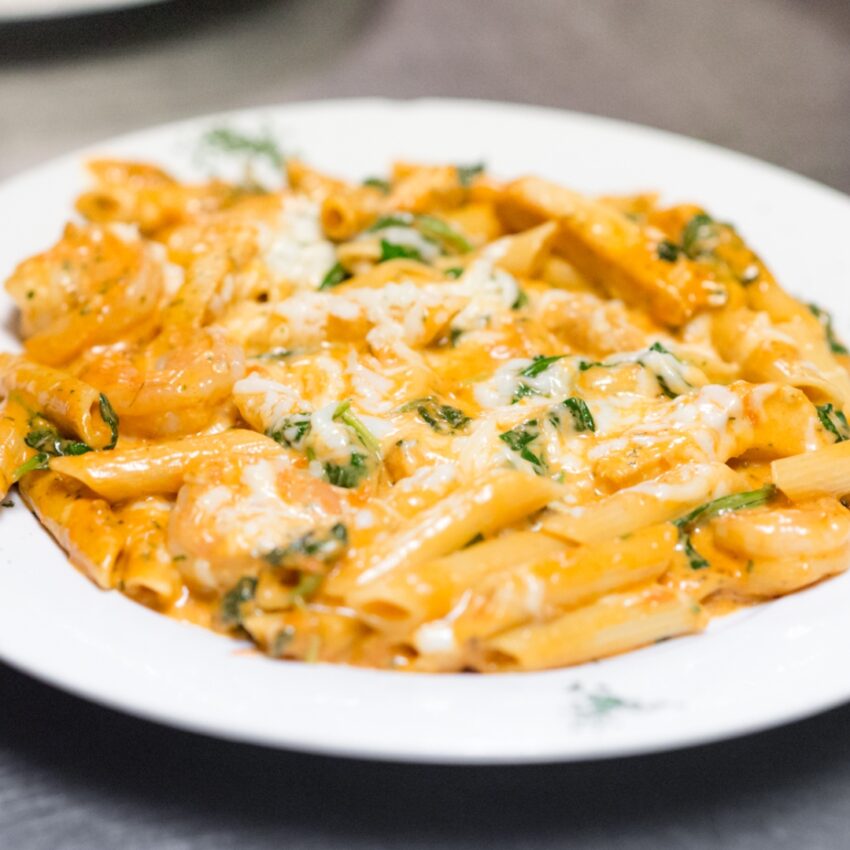Making pasta from scratch connects you with centuries of culinary tradition, transforming a few simple ingredients into a meal that is both comforting and elegant. The tactile process of kneading dough and rolling it into thin sheets allows you to feel the transformation of flour and eggs into something greater than the sum of its parts. This hands-on approach not only enhances the flavor and texture of the pasta but also adds a personal touch that makes every bite special. Whether you’re preparing a quiet dinner for yourself or a festive meal for friends, homemade pasta serves as a testament to the joy of creating food with your own two hands.
Ingredients:
- 2 cups all-purpose flour (plus extra for dusting)
- 3 large eggs
- 1/2 teaspoon salt
- 1 tablespoon olive oil (optional)
Equipment:
- Large mixing bowl
- Fork or dough scraper
- Rolling pin or pasta machine
- Knife or pizza cutter
- Clean kitchen towel
Instructions:
- Prepare the Flour Mixture: On a clean work surface or in a large mixing bowl, pile the flour into a mound. Create a well in the center, similar to a volcano. Sprinkle the salt evenly over the flour.
- Add the Eggs: Crack the eggs into the well in the flour. If you’re using olive oil, add it to the eggs. With a fork, gently whisk the eggs and begin to incorporate the flour from the edges of the well. Be careful not to break the sides of the well too soon, or the eggs might spill out.
- Form the Dough: Once the mixture becomes thick and sticky, use your hands or a dough scraper to start folding in more flour. Continue mixing until all the flour is incorporated, and the dough begins to come together. It should feel slightly sticky but manageable.
- Knead the Dough: Knead the dough for about 8-10 minutes. To do this, press the heel of your hand into the dough, pushing forward slightly. Fold the dough in half, turn it 90 degrees, and repeat. The dough is ready when it’s smooth, elastic, and bounces back when you press it with a finger. If the dough feels too dry, add a tiny bit of water. If it’s too sticky, dust it with more flour.
- Rest the Dough: Wrap the dough in plastic wrap or cover it with a clean kitchen towel. Let it rest at room temperature for at least 30 minutes. This resting period allows the gluten to relax, making it easier to roll out.
- Roll Out the Dough: Divide the dough into four equal parts. Keep the pieces you aren’t working with covered to prevent them from drying out. Using a rolling pin or pasta machine, roll out one piece of dough into a thin sheet, about 1/16 inch thick. If you’re using a pasta machine, start with the widest setting and gradually work down to thinner settings.
- Cut the Pasta: Once the dough is rolled out to your desired thickness, you can cut it into your preferred pasta shape. For tagliatelle or fettuccine, roll the sheet loosely and cut into strips with a knife. For lasagna, cut into rectangular sheets. If you want filled pasta like ravioli or tortellini, now is the time to prepare your fillings and shape them.
- Cook the Pasta: Bring a large pot of salted water to a boil. Fresh pasta cooks much faster than dried, typically in about 2-4 minutes depending on thickness. The pasta is done when it floats to the top and is tender but still slightly firm to the bite (al dente).
- Serve: Drain the pasta and toss with your favorite sauce. Fresh pasta pairs beautifully with simple sauces like tomato basil, garlic and olive oil, or a classic Alfredo.
